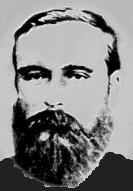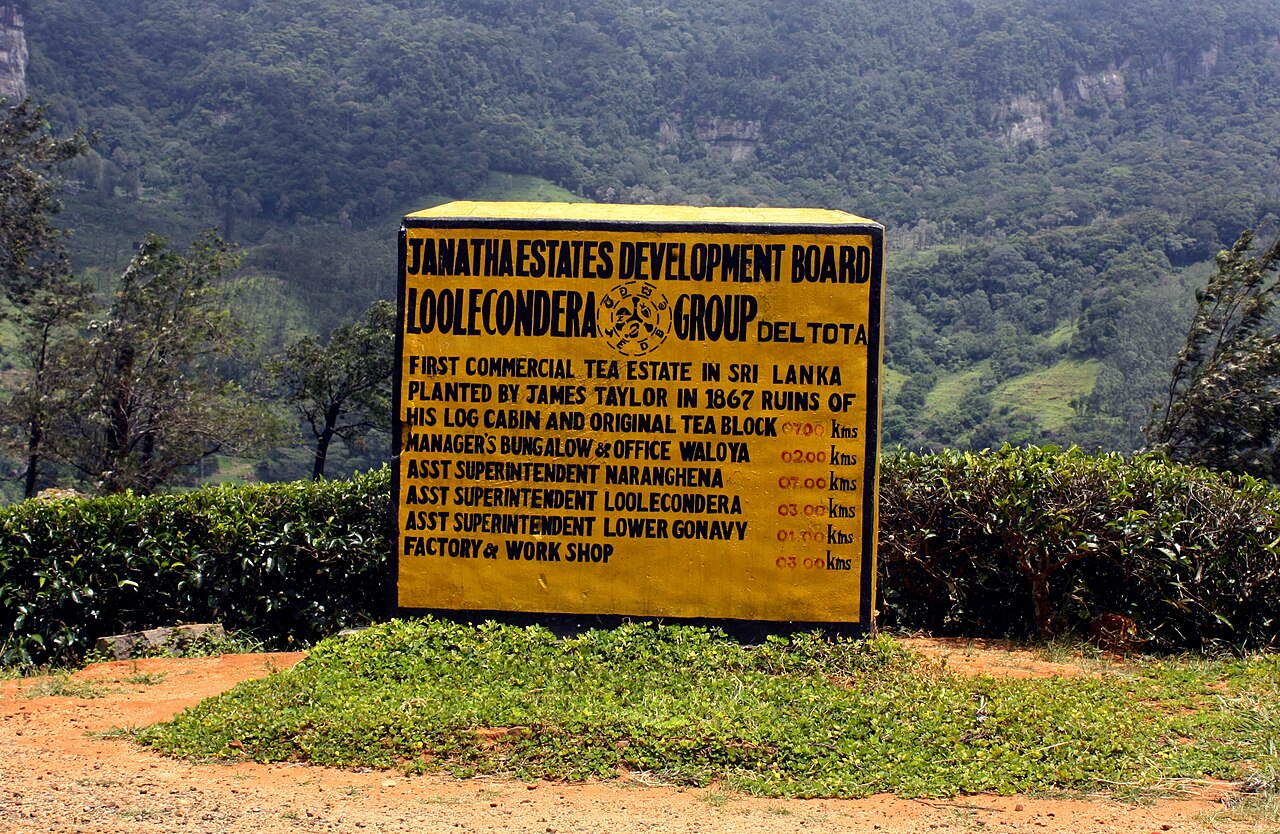In the hills of Ceylon (now Sri Lanka), one man’s determination and vision forever changed the landscape and economy of an island nation. James Taylor, a Scottish pioneer who arrived in Sri Lanka in 1852, would transform a coffee-growing colony into one of the world’s preeminent tea producers, creating a legacy that continues to this day.
Beginnings
James Taylor was born in Kincardineshire, Scotland, in 1835. He was just 17 when he set sail for Ceylon, under the employ of the British firm Messrs. Harrison and Leake. The young Scotsman arrived with agricultural knowledge but couldn’t have foreseen the pivotal role he would play in establishing an industry that would define a nation’s identity for centuries to come.
He was initially assigned to the Loolecondera Estate near Kandy in Ceylon’s central highlands as a coffee planter. Coffee was the dominant crop at the time, and Ceylon had established itself as one of the world’s largest coffee producers. However, fate would soon intervene in a way that would test the colony’s resilience and Taylor’s innovative spirit.
Crisis and Opportunity
By the 1870s, disaster had struck Ceylon’s coffee industry. A fungal disease known as coffee rust (Hemileia vastatrix) began devastating plantations across the island. The blight spread rapidly, and coffee production plummeted catastrophically within a decade. Plantation owners faced ruin, and the colony’s economy teetered on the brink of collapse.
During this crisis, James Taylor’s experimental work with tea gained crucial importance. Taylor had been quietly studying and cultivating tea plants using Assamica seeds imported from India. His timing proved providential. He established a small tea nursery at Loolecondera in 1867,
The Birth of Ceylon Tea
What distinguished Taylor was not only his timing but his methodical approach and willingness to innovate. He developed Ceylon’s first tea factory, adapting a bungalow on the estate and creating machinery for processing tea leaves. Most significantly, Taylor invented a revolutionary tea leaf rolling machine that mechanized a process previously done by hand.
Taylor’s approach to tea cultivation was comprehensive. He researched optimal planting techniques, studied ideal elevations and soil conditions, and developed precise methods for plucking leaves. The “two leaves and a bud” standard remains the hallmark of quality tea production today.
By 1875, James Taylor had shipped his first shipment of 23 pounds of Ceylon tea to London. Though small in volume, this marked the beginning of an industry that would reshape Ceylon’s economic landscape. Taylor’s methods proved so successful that nearby estates began converting their failing coffee plantations to tea, often seeking his advice.

A Legacy Steeped In History
Taylor’s dedication to his craft was legendary. He rarely left Loolecondera, preferring to focus entirely on perfecting tea cultivation and processing. His lifestyle reflected his single-minded focus. He lived in a modest bungalow and dedicated himself to the daily operations of the estate and his experimental work.
Under Taylor’s guidance, Ceylon tea gained a reputation for exceptional quality. By the 1890s, Ceylon had become one of the world’s most important tea producers. Tea estates spread across the highlands, creating a new landscape of neatly terraced hillsides that would become iconic imagery associated with Ceylon.
James Taylor’s innovations extended beyond cultivation techniques. He was instrumental in establishing infrastructure for the tea industry, helping develop transportation systems to move tea from highland plantations to coastal ports for export.

Despite his monumental contributions, Taylor remained humble. He never sought the limelight, and historical accounts describe him as reserved and focused. His dedication came at a personal cost. He never married or had children, and his life was almost entirely devoted to his work at Loolecondera.
When James Taylor died in 1892 at the age of 57, he was mourned throughout Ceylon. Local newspapers named him “the father of Ceylon tea,” acknowledging his pivotal role in establishing what had become the colony’s economic backbone.
Enduring Influence
Today, Sri Lanka remains one of the world’s foremost tea producers. The Ceylon tea industry employs over one million people and serves as a crucial export sector. The methods Taylor pioneered over 150 years ago continue to influence tea production not just in Sri Lanka, but worldwide.
A monument stands at Loolecondera Estate commemorating James Taylor’s contributions, and tea enthusiasts from around the world visit the birthplace of Ceylon tea. His legacy lives on in every cup of Ceylon tea enjoyed around the globe—a fitting tribute to a man whose vision and perseverance transformed crisis into opportunity and created an enduring industry that continues to thrive in the 21st century.
Help Support This Site

Please support my work in tea by joining my Patreon community. For $2-$5 a month, you’ll receive access to exclusive behind-the-scenes content, my private Discord server, surprise quarterly packages, and more!



